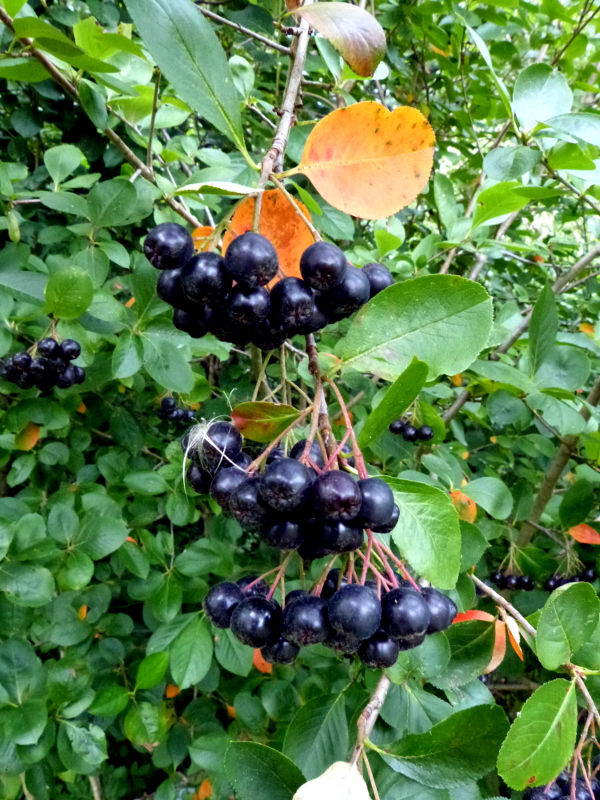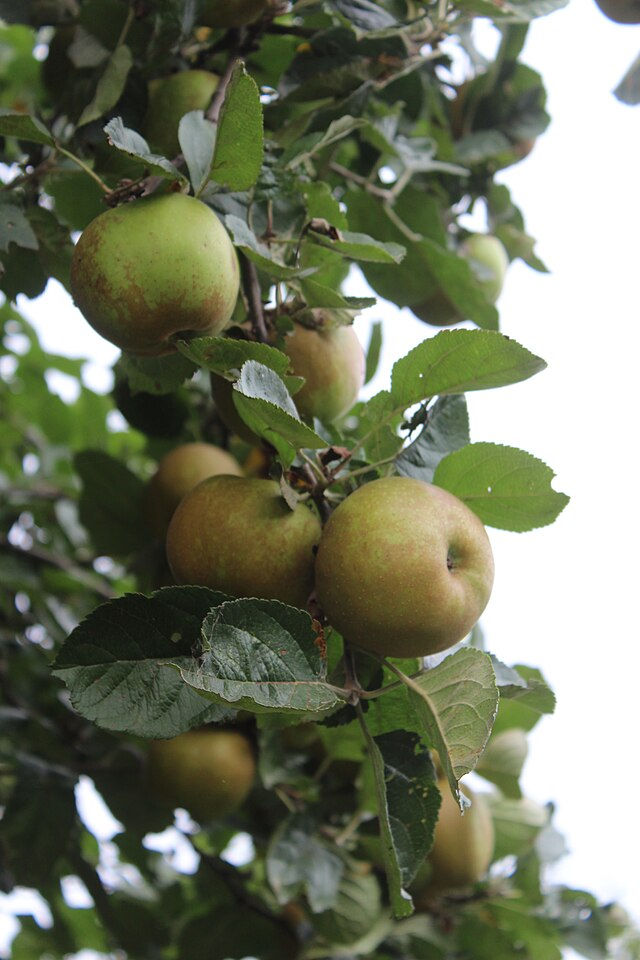Edible Landscape Design: Aronia (Chokeberry) — Top 10 Permaculture Species
- Tamayo
- Sep 3
- 4 min read
Why Aronia (Chokeberry) Is the Shrub That Crushes Blueberries in Nutrition, Resilience, and Design
I woke this morning and soon realized I was out of Aronia for my smoothie. I fingered through the fridge vegetable drawers. Nothing but a shriveled peach from an Orcas summer gone by. I went outside without a prayer, knowing I had already picked my shrubs clean of the deep purple temperate berry that is the cornerstone nutrient of my mornings. I debated having my smoothie without it. When I saw no greens either, I got in my truck and drove to a nearby food forest I built years ago. Loaded. I thanked myself for planting so many.
I began filling my coffers with the nutrient gold. Aronia's nutrient profile reads like the fountain of youth. Blueberries? Cute. Losers compared to Aronia's anthocyanin load. I am freezing them today. I don’t want to repeat this in December.
That’s the thing about Aronia, or chokeberry. It doesn’t just sit pretty in the shrub layer of a food forest landscape. It shows up, takes over the neglected corners of your land, and hands you back fruit that could anchor a diet, a pantry, or a medicine chest. This isn’t an ornamental hedge. It’s survival dressed up in autumn fire.

Aronia's Position in the Edible Landscape Design
Aronia is a middle-tier shrub in a food forest or edible landscape design, thriving between canopy and groundcover. It fills the sunlight gaps beneath fruit trees, works beautifully as a hedge or border, and tolerates wet spots that usually get ignored. Use it as an edge buffer, a wildlife corridor, or an understory planting that still pays you back with food.
I’ve planted Aronia in a diversity of soil types from clay pan to rocky and acidic. The production is staggering in balanced soil, a bit less in clay and rocky, but Aronia still thrives wherever you put it. It doesn’t want your affection or babying. It wants a little water, sun, and to be left alone.
Permaculture Functions of Aronia melanocarpa
Food: Superberries for juice, wine, preserves, and smoothies.
Medicine: High antioxidant, anti-inflammatory properties.
Wildlife Support: Flowers for pollinators, berries for birds and mammals, dense cover for nesting.
Ornamental Value: Four-season interest — blossoms, glossy foliage, fall color.
Soil Resilience: Tolerates clay, sand, wet ground; stabilizes soil.
Privacy/Windbreak: Thick shrubs form natural screens.
Propagating Aronia
Aronia doesn’t make you beg or buy. It can be propagated by:
Seed: Cold stratify for 3–4 months, then sow.
Cuttings: Softwood cuttings root readily in summer with a little patience.
Division/Suckers: Dig and split established clumps — the easiest way to multiply shrubs fast.
Once planted, Aronia requires almost no maintenance beyond occasional pruning. Tough, generous, and self-reliant — exactly what you want in a permaculture ally.
Aronia's Nutritional Punch (It Laughs at Your Kale Smoothie, Scoffs at Your Blueberry)
Aronia doesn’t just look good in a permaculture guild — it hits like a prizefighter in the nutrition ring. A hundred grams of these berries (that’s a small handful) clock in at only 47 calories. Hardly worth the guilt of eating them by the fistful.
Inside that same handful:
Fiber: 5+ grams — double what you get in blueberries.
Vitamin C: about 24% of your daily needs.
Vitamin K: 12–15% of your daily dose.
Manganese: 30% DV.
Plus iron, folate, potassium, magnesium — the kind of mineral cast that usually shows up in “super greens.”
But the real brag? Antioxidants. Aronia’s anthocyanins run anywhere from 400 to 1,500 milligrams per 100 grams. That’s three to five times the load of blueberries. Add in its tannins and polyphenols, and you’ve got one of the most antioxidant-rich fruits on the planet. Which is why your mouth goes Sahara-dry if you eat them raw — that’s the good stuff at work.
How We Use Aronia at Pendragon
At Pendragon Orchard & Vine, Aronia isn’t a mystical species — it belongs. We freeze berries for winter smoothies, ferment them into dark country wine, and leave plenty for the birds to stage their annual feast. Aronia hedges hold the edges of our food forest, stitching together orchard rows with blazing fall color. For us, it’s not just another shrub. It’s the anchor of the middle layer — and a reminder that resilience can be delicious. The longer you wait, the less tannins you’ll taste and the sweeter the fruit. But, you will compete with birds, though I have planted enough to share. Consider netting them if they're getting to them first.
Why Aronia Belongs in Your Orchard or Edible Landscape
Here’s the pitch: hardy as hell, nutrient-rich, tough enough for bad soil, generous to wildlife, and gorgeous in every season. Aronia doesn’t just earn its place — it dares you to find something better. In permaculture, that’s gold. If your orchard is all canopy and groundcover with nothing in between, it’s not finished. Drop in Aronia and watch the system lock into place.




Comments